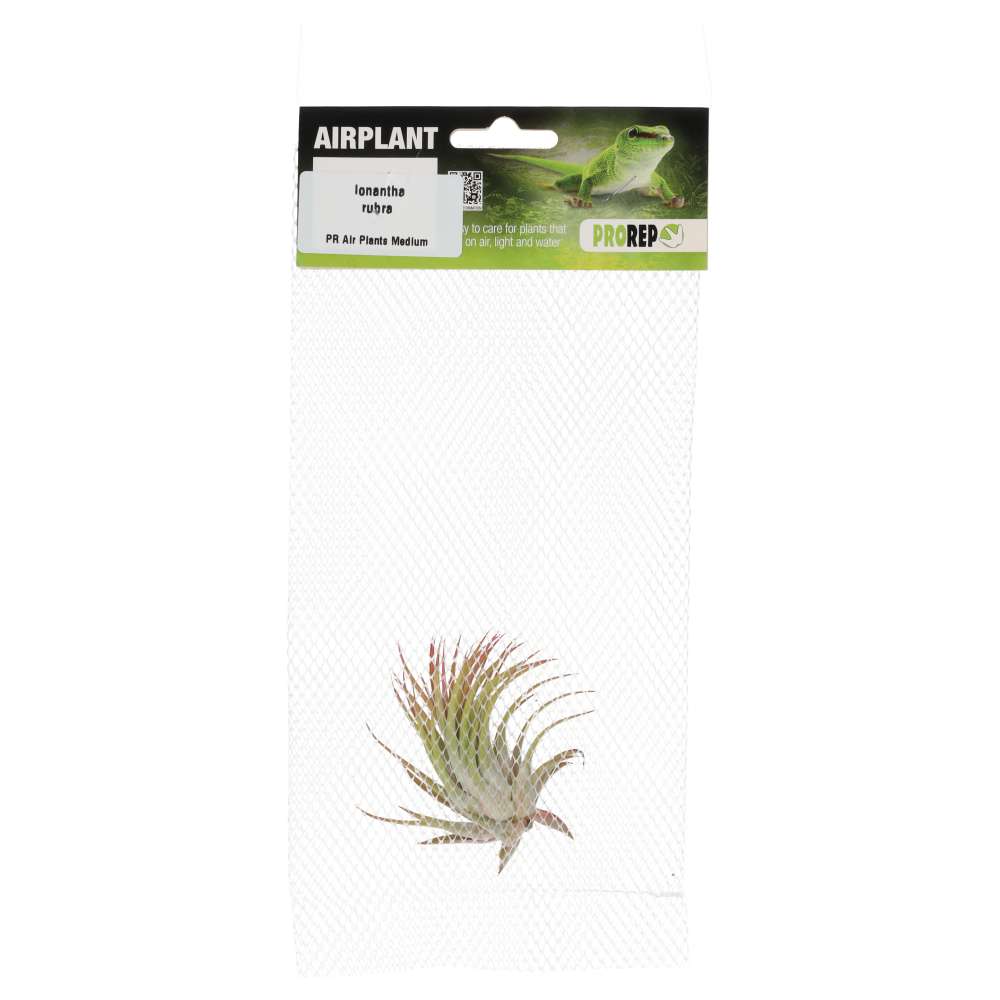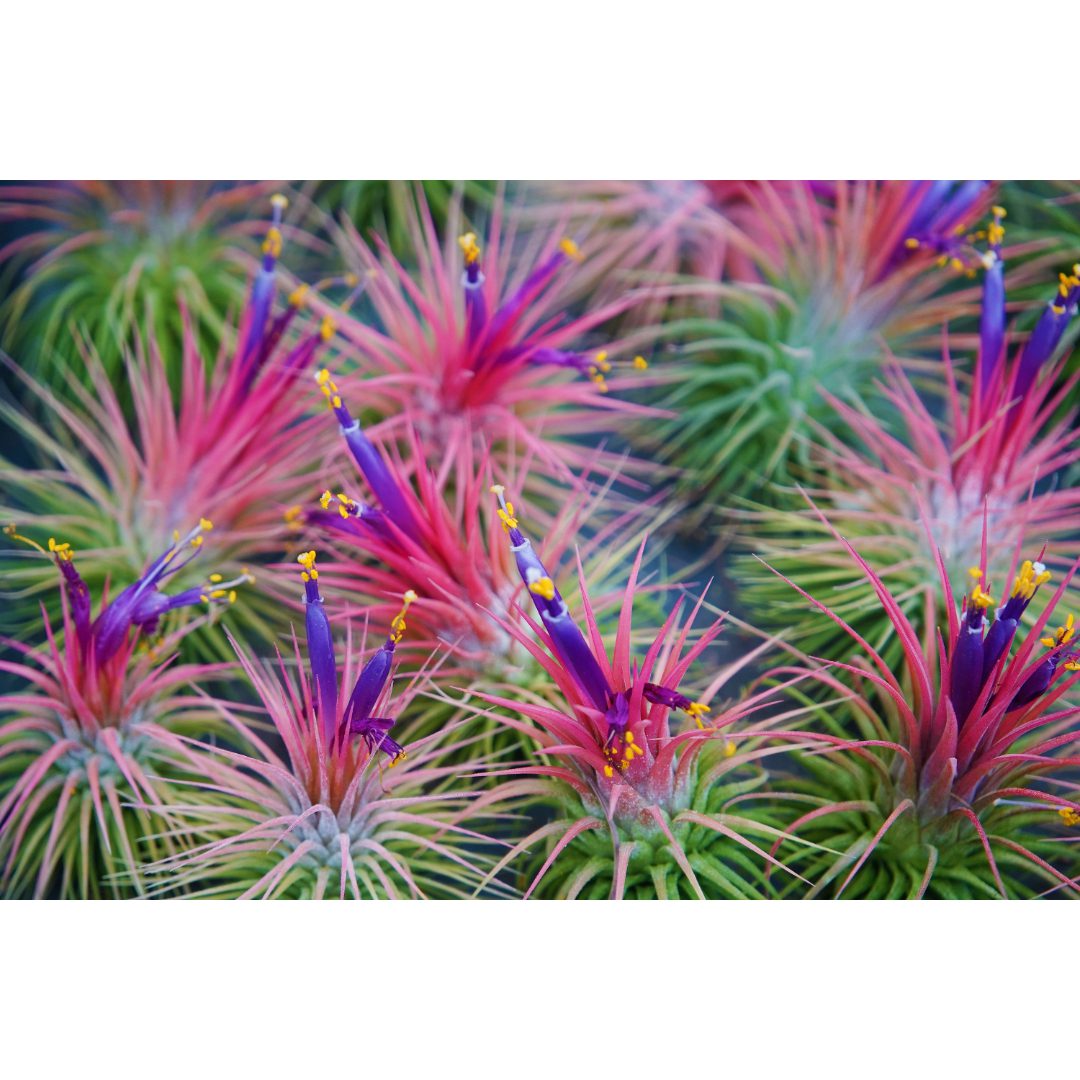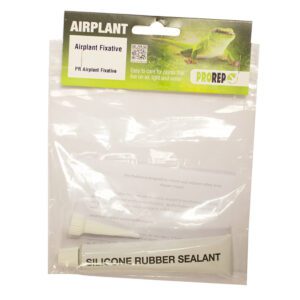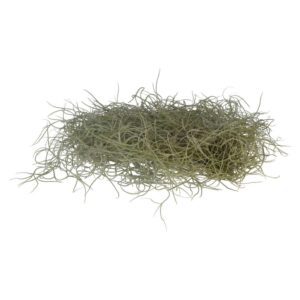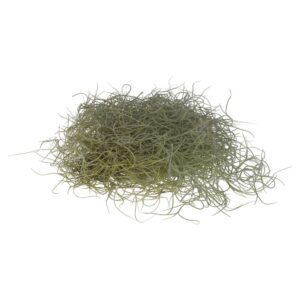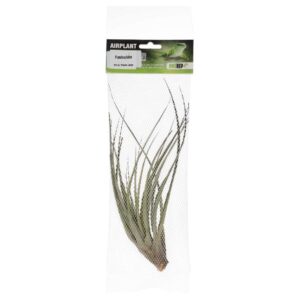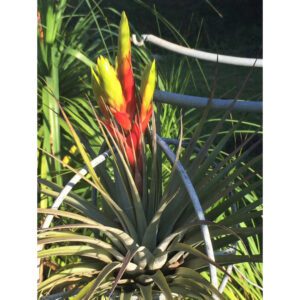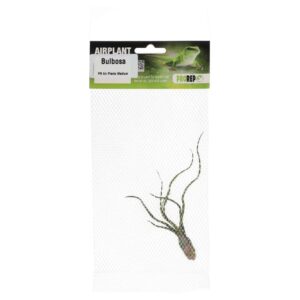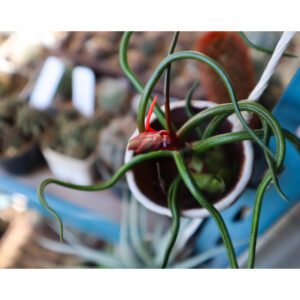Ionantha rubra
Mature Appearance:
Compact rosette similar to I. ionantha but overall leaf colour more consistently rose to ruby red, even when not blooming.
Rosette diameter ~7–9 cm, leaves densely covered in silvery trichomes.
Flowering stalk ~6–8 cm tall with magenta‐pink bracts and violet flowers.
Life Cycle:
Blooms once (often in late summer).
Produces 2–5 pups per bloom‐cycle around the base.
Mother plant slowly yellowing and drying after pups reach 3–5 cm.
Enclosure Use:
Best Fit: Smaller arboreal setups—e.g., young chameleons, dwarf geckos, or pygmy day geckos.
Can be nestled among mosses on sloped cork backgrounds to create a “living wall.”
Its red hue provides a splash of colour in predominantly green vivaria.
Care:
Light: Bright, filtered—excessive direct sun can scorch the leaf tips.
Humidity & Watering: 60–80% RH; mist every 2 days, soak weekly.
Airflow & Dry‐Time: Leaves should dry within 4–5 hours; adjust misting if it stays wet longer.
Temperatures:
16–26 °C ideal; protect from prolonged temperatures <15 °C.
Overview of Enclosure Placement & Compatibility Arboreal Reptiles (Geckos, Tree Snakes, Chameleons):
Mount mid‐ to upper‐level on cork bark or natural branches—air plants stay dry at leaf tips and provide perches. Paludariums (Dart Frogs, Newts): Position so bases are above standing water but within mist zones; high humidity helps their growth and stability. Terrestrial Reptiles (Small Tortoises, Skinks): Generally, avoid placing air plants on floor substrate where they stay too wet. Instead, mount on vertical surfaces.
Nocturnal Reptiles (Crepuscular Geckos, Tree Frogs):
Many Tillandsias thrive in lower‐light understory conditions—select varieties like Ionantha scaposa or Brachycaulos multiflora that tolerate moderate light. Basic Care Tips for All Tillandsias in Reptile Enclosures Light: Most need bright, indirect light; avoid full midday sun inside a glass vivarium to prevent heat buildup.
Watering: Misting: Use a fine‐mist sprayer; wet entire plant until beads form on leaves. Soaking: Remove and soak in dechlorinated, room‐temperature water. For large species (e.g., T. fasciculata), soak 20–30 minutes; smaller ones 10–15 minutes. Frequency: In a high‐humidity vivarium (≥70% RH), misting 2×/week may suffice. In drier rooms, mist 3–4 times weekly with a weekly soak. Airflow: Ensure leaves dry within 4–6 hours to prevent rot. Use vent fans or leave enclosure slightly ajar after misting. Temperature: Most thrive between 18–28 °C. Avoid prolonged humidity with temperatures >30 °C, which can lead to fungal issues.
Fertilizer: Optional: use a bromeliad or tillandsia‐specific foliar fertilizer at ¼ strength once a month during active growth. Rinse thoroughly after to prevent residue.
Mounting & Display:
Attach using fishing line, thin wire, or high‐temp silicone to cork bark, rock, or driftwood. Do not use glue that can leach toxins.
Position so water does not pool in leaf rosettes—provide an angle or slight tilt to assist drainage.
By integrating these air plant species into your reptile vivaria, you create a more natural, three‐dimensional environment—offering climbing surfaces, humidity buffering, and visual interest—while providing minimal maintenance needs. Proper placement, regular but moderate watering, and good airflow will ensure your Tillandsias thrive alongside your reptiles.

